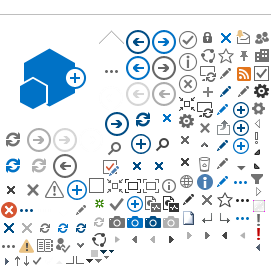Program Overview
The cardiac imaging fellowship program is focused on bespoke, personalised training and support and includes, educational training covering weekly sessions on cardiac CT and MRI physics, basic principles of pulse sequence design, scanner interfaces, and protocol optimization. Regular supervised reporting sessions substantially enhance Fellows’ knowledge of all forms of diagnostic imaging as they apply to the unique clinical and pathophysiologic problems encountered in diseases affecting the cardiovascular system.
We are an academic center with growing volume in both cardiac CT and cardiac MRI. In the Heart Hospital (HH) we perform CTA coronaries, CTA structural morphology/TAVR/Function/congenital, and pre-procedural planning for TAVR and Atrial Fibrillation Ablation. We perform cardiac MRI for viability, VT/Vf ablation, cardiomyopathy, adult congenital heart diseases, cardiac masses, etc. We perform any of these as outpatient or inpatient studies.
Goals and Objectives
- Acquire knowledge of the underlying physics of cardiac imaging techniques (Radiography, Radionuclides, Computed Tomography, and Magnetic Resonance Imaging).
- Acquire diagnostic skills to adequately interpret cardiac imaging techniques, in particular Cardiac CT and Cardiac MR.
- Gain basic knowledge of cardiac imaging techniques outside the Heart Hospital Clinical Imaging Department – Echocardiography, Nuclear Myocardial Perfusion Studies, and Paediatric Cardiac MR.
- Judge the most appropriate imaging modality based on the clinical query.
- Develop the knowledge necessary to set the appropriate CT and MR protocols based on the specific clinical scenario.
- Manage complications of cardiac Imaging techniques such as iodinated contrast allergy.
- Develop basic skills necessary for research in cardiac radiology.
Clinical Training and Key Rotations
The trainee will spend an overall period of training of 24 months.
This training program shall include the following rotations:
|
The first 3 months
|
The fellow is expected to learn modality-based anatomy as well as learning techniques of cardiac related examinations and procedures.
The fellow must be capable to plan, perform, report and archive diagnostic procedures related to the different clinical areas with focus on plain x-rays and CT coronary reporting under supervision as guided by faculty member.
|
|
3-6 months
|
The fellow must be capable to plan, perform, report and archive diagnostic procedures related to the different clinical areas as above with focus on the Cardiac CT reporting under supervision as guided by faculty member.
|
|
6-12 months
|
The fellow must be capable to plan, perform diagnostic procedures related to the different clinical areas covering the basic cardiac MRI with supervision as guided by faculty member.
The first year shall include one-month rotation in echocardiography (4th quarter of 1st year).
|
|
12-24 months
|
Constantly increasing experience and capability to plan, perform, report and archive diagnostic procedures related to the different clinical areas with focus on cardiac MRI.
The second year shall include one-month rotation Nuclear medicine and PET CT (1st quarter of 2nd year).
The second year shall include 12 sessions rotation in paediatric cardiac imaging in Sidra.
Within the 2-year Fellowship there will be assignments covering adult congenital heart disease.
|
Contact Information
44395682/44395684
Program Director:
Dr. Maryam Alkuwari
Associate Program Director(s):
Dr. Abdelnasser Allam
Program Coordinator:
Ms. Michaela Ocon
Program Email:
MOcon@hamad.qa
Facilities and Resources
- Clinical cardiovascular CT scans take place in HH, HGH, ACC but mainly in HH.
- There is 1 CT scanner in HH: 348-slice (2x192) dual source CT (Siemens Somatom Foce).
- There is 1 CT scanner in HGH: 128-slice dual source CT (Siemens Somatom definition Flash).
- There is 1 CT scanner in ACC: 128-slice dual source CT (Siemens Somatom definition Flash).
- Dedicated cardiac MRI scanner at HH: Philips 1.5 Tesla Ingenia
- Two MRI scanners at RH: Siemens 3 Tesla skyra and 1.5 Tesla Aera.
All scanners are linked by PACS (Fuji –Clinical Workflow Manager) that allows remote image viewing and interpretation.
